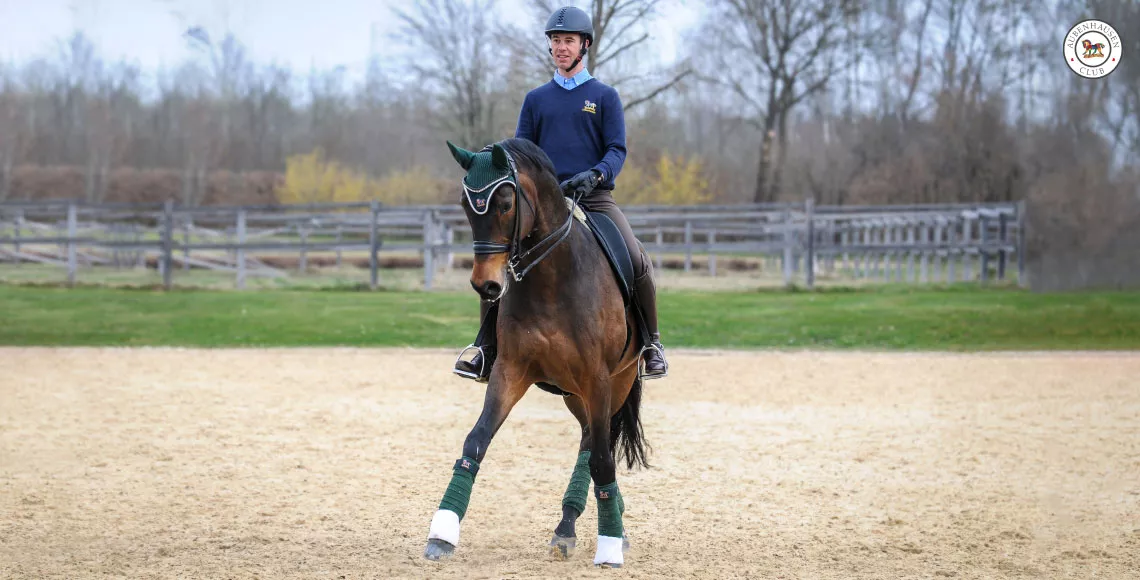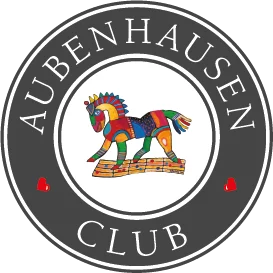
Lateral Work: From Leg Yield to the Zig Zag
We consider leg yields the introduction to lateral work. Technically, however, the leg yield is by definition not a lateral movement as it’s supposed to be ridden with flexion but not bend. Classical lateral work requires both flexion and bend. But during training, there are certain situations in which it can be helpful to ride leg yields with a bit of bend or very straight without flexion.
That’s what the different lateral movements are about
The leg yield is a suppling exercise and helps establish the forward-sideways driving aids. “As the name suggests, the idea of the leg yield is for the horse to yield to the driving leg,” summarizes Jessica von Bredow-Werndl. “The horse is slightly flexed toward the side of the sideways-driving leg, first at the walk and later at the trot. The walk gives them a bit more time to coordinate their legs and understand the exercise. In the trot, it’s easier to propel the foot forward. With all lateral movements, it’s important to always maintain the forward.”
The next step is the shoulder in, with shoulder fore as a preparatory exercise. The horse is bent and flexed, and ridden in a collected forward-sideways movement. “The horse’s forehand is guided to the inside so that the outside shoulder is aligned with the inside hip. For example, the hind legs stay on the track and are moving practically straight forward. The inside hind leg is tracking toward the outside front leg. The horse is moving on three tracks.” That’s how the German FN publication “Principles of Riding and Driving I” explains the shoulder in. The shoulder in animates the inside hind leg to reach further under the body toward the center of gravity. The horse’s hip joints and stifles have to be more engaged. This helps develop strength, elasticity as well as straightening.
The next lateral movement we teach is travers (haunches in). Here, the horse is bent and flexed into the direction of movement. The forehand is traveling along the track whereas the haunches are brought to the inside. Travers can of course be ridden on different lines, on the first, second or third track, or on a circle or volte. Renvers (haunches out) is the counter movement to travers. Here, the haunches are moving along the track whereas the forehand travels to the inside of the haunches. Both in travers and renvers, the horse is traveling on four tracks and crosses both front and hind legs. Both exercises promote elasticity, flexibility, the horse’s prompt response to the leg, flexion, and bend, and therefore also straightening. They are also a preparation for the half pass. A half pass is nothing other than travers on an imagined diagonal line. Depending on the required line, they can be ridden from one long side to the other, from the long side to the centerline, and can include a change of rein when going back to the long side from the centerline, for example. The zig zag is the most challenging form of the half pass.
This is how horses learn lateral movements in a playful way
Jessica von Bredow-Werndl explains: “As an intermediary step to teaching the half pass, I refrain from bending and flexing my horse and try to keep his body as straight as possible in the sideways movement – parallel to the track.” She adds: “It’s important to me that the horses understand us and that what they learn is easy for them. That’s why it makes sense to break down challenging movements such as the half pass into their separate elements until we put them back together like a puzzle. The ‘what’ is initially the more important question for me, i.e., that the horse gets the idea of the motion sequence and learns to coordinate it. Only then do we think about the ‘how,’ the quality of the execution. Ultimately, we want our horses to perform lateral movements with ease, expression, and elegance. That’s only going to happen if we explain the exercises and structure the training in such a way that they truly find it easy and enjoy it.”
To improve the quality of the half pass, we like to combine different lateral movements in which the horse has to frequently shift alignment and rebalance. Here is one of our favorite sequences that helps improve the response to light aids, throughness, and balance in the half pass. Depending on the horse’s level of training, lateral work can be combined in short sequences, or, in the beginning, be ridden further apart without changing rein often. Shoulder in is a preparation for the half pass. Continuing in a leg yield before the shoulder in in the other direction helps the horse to stay in balance and keeps him for falling onto the new inside shoulder.

You can find step by step instructions on how we introduce and improve all lateral movements at Aubenhausen in our dressage masterclasses Shoulder In and Travers & Half-Pass.
